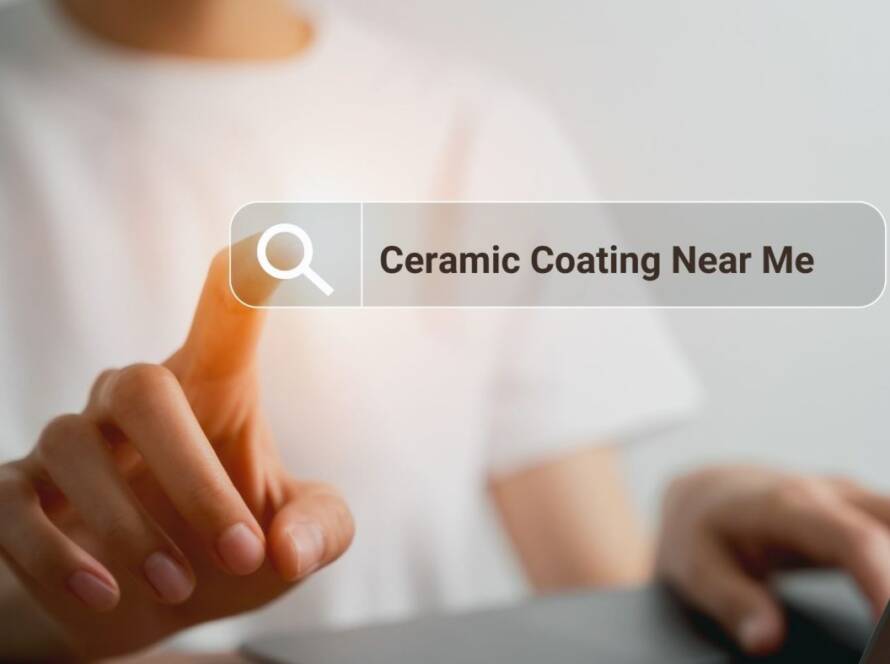Witnessing water, dirt, and road grime effortlessly dispersing off a vehicle’s surface feels almost like magic – drops simply bead up and roll away, leaving paintwork brilliantly clean and glossy. However, the science enabling this “self-cleaning” action stems from advanced nano-technology employed within hydrophobic ceramic coatings.
Leveraging molecular properties, these specialized protectants rearrange matter at an invisible scale to create intensely water-repellent surfaces. Let’s explore the innovative chemistry behind hydrophobic ceramic coatings and how they elevate automotive detailing into the 21st century.
The Basics: Hydrophobicity and Surface Energy
Hydrophobicity refers to the inability of a surface to absorb or become wet by water molecules. The degree of hydrophobicity depends on a surface’s energy and molecular composition. High surface energy attracts more adhesion. Lower energy results in more repellency.
Traditional carnauba waxes and synthetic sealants attempt to induce hydrophobicity, but their relatively high surface energy still attracts a degree of water bonding. This leads to that familiar water spotting, sheeting, and marking on automotive clearcoats after getting caught in the rain.
Conversely, ceramic protectants utilize nano-particles and specialty polymers to achieve incredibly high levels of surface energy reduction. These intensely hydrophobic surfaces cause water molecules to simply bead up and roll away with ease.
Constructing a Nano-Scale Barrier
How do some cars just seem to repel water, oil, and anything you throw at them? Well, it’s all about getting down to the nitty-gritty, literally. We’re talking about crafting an almost magical shield at the nano-scale, with surfaces that might look smooth but are full of tiny peaks and valleys.
Ceramic coatings utilize a three-part system to construct this invisible yet powerful barrier against the elements:
Part 1: Silica Nanoparticle “Seeds”
- It starts with these microscopic silica (SiO2) particles that latch onto your car’s surface. Think of them as the foundation stones, setting the stage for what’s to come. They scatter all over, creating anchor points that are ready to sprout into a full-blown nanostructure.
Part 2: Polymer Linking
- Next up, special adhesion polymers jump into the fray, grabbing those silica particles and locking them together. This isn’t just any bond; it’s a super-strong, durable connection that forms the backbone of our nano-scale barrier, making it tough as nails.
Part 3: Hydrophobic Surface Formation
- The finale is a slick, fluorinated topcoat that essentially tells liquids to take a hike. This layer lowers the surface energy so much that liquids can’t stick; they just bead up and roll off. It’s like turning the surface of your car into a liquid-repelling superhero, complete with its force field.
This three-part system enables not just water repellency but omniphobic protection from oil, mud, fingerprints, bird droppings, and a variety of contaminants. It generates an extremely high contact angle, causing liquids to simply disperse away.
Amplifying Self-Cleaning Properties
Let’s dive a bit deeper into what makes hydrophobic ceramic coatings a game-changer for keeping your car clean. It’s not just about water rolling off your car; these coatings take cleanliness to the next level with some seriously smart technology.
Super-Spreading Formulas
First off, we’ve got these super-spreading formulas. They crank up the water’s contact angle, making droplets spread out thin and fast. This action sweeps away dirt and grime like nobody’s business, keeping your car looking spotless with much less effort.
Hyper-Smoothing Action
Then, there’s the hyper-smoothing action. Picture a surface so slick that water just can’t wait to slip off. This isn’t just about avoiding water spots; it’s about making sure nothing sticks around long enough to leave a mark. Water pooling? Droplet pinning? Forget about it. Your car stays drier and cleaner.
Superior Environmental Stability
And let’s not forget the superior environmental stability. Thanks to some clever chemistry involving covalent bonding, these coatings don’t just give up after a few months. They stay strong, keeping your car’s hydrophobic shield intact for years, rain or shine. This means your car doesn’t just fend off water; it resists all sorts of chemical assaults without breaking a sweat.
Together, these nifty features mean your car isn’t just clean; it stays clean. Dirt, water stains, and other unwelcome guests find it a lot harder to stick around. Plus, with this kind of durability, you’ll be skipping those frequent washes and waxes, saving time and effort in keeping your ride in pristine condition.
A Nano-Science Quality Solution for DIYers
As the hydrophobic science behind ceramic coatings continues advancing, companies like Feynlab aim to put this “detailing of the future” within reach of automotive enthusiasts. Their professional-grade and DIY-friendly products leverage the same patented nano-technology trusted by the world’s top auto spas and coatings. Chemistries are precisely engineered to impart maximum hydrophobicity and self-cleaning capabilities while maintaining a mirror-like gloss for a complete detailing transformation.
Hydrophobic ceramic coatings unlock extraordinary levels of paint protection, water-shedding performance, and maintenance ease by harnessing laws of physics and chemistry down to microscopic scales. With Feynlab’s formulas, anyone can elevate their ride to a new realm of showroom perfection – rain or shine.


